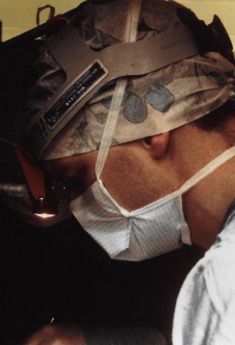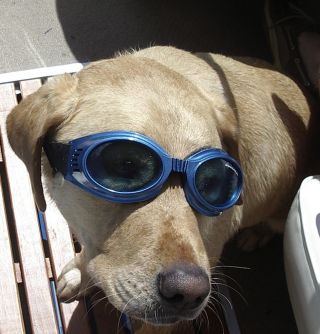Body Language
Peering Under the Mask
A Personal Perspective: Nonverbal cues are critical to our interactions.
Posted July 10, 2023 Reviewed by Devon Frye
Key points
- Facial expressions and nonverbal cues add important nuance to our interactions.
- Through multitasking and distractions, we may not attentively observe each other when we interact.
- Relationships are strengthened or weakened by each our interactions.
- We should remind ourselves to actively focus on one another when we interact.

As a surgeon, my communications with my coworkers often took place from behind a mask. And it seemed to work fine. We got the job done. Lives were saved. Goals were accomplished with very few misinterpretations, misunderstandings, or miscues. But outside of the operating room, it could be a different story.
For example, I sometimes found myself having difficulty initially connecting with some of my patients. In our opening pleasantries, they would fail to smile or demonstrate even a hint of personality. I would later discover that they had Parkinson’s Disease, with the classic “mask-like faces.” I realized that their flat, expressionless faces had affected my perception of them, my opinion of them, and, I dare say, my interactions with them.
Same with chronic pain patients. They often bore a mask as well. One of discomfort, yes, but one also of learned helplessness and surrender. Flat, unanimated, unsmiling. And again, I’m sure that it affected our interfaces.
The Importance of Facial Expression in Our Interactions
It was only during the pandemic, that I fully came to appreciate the importance of observing facial expressions. I taught, in person, a class of masked undergraduates, and another class, online, of unmasked ones. I far preferred working with my online students.
Why? Because I could observe their faces. I knew when I was holding their attention and when they were getting bored; when they “got it” and when they were struggling with a concept; when they were enjoying the class, and when they were hating it.
We, as a species, have dedicated much real estate in our brains to making and interpreting facial expressions. In ideal settings, we study each other’s faces for all sorts of hints to our counterparts’ underlying emotions, moods, motivations, and intentions.
Babies develop and hone these skills early in life. They scan their parents’ faces intensely. They respond differently to various expressions and react to changes in said expressions. And, they learn to mimic expressions and rapidly develop their own repertoires of them.
We all infuse our interfaces with our fellow beings with oodles of associated visual cues. Many involve subtle or not-so-subtle changes in expression.
Most of us are unable to fully suppress such changes—making us easy marks for card sharks. They’re masters at picking up on our cues, our “tells.” So are those “socially gifted” individuals who seem to have a knack for reading a room.
Without the associated cues, our exchanges with each other would become akin to emails or texts—where wild misinterpretations can occur due to the lack of emotional coloring of the wording, and lack of nuance to the overall communication. People with certain psychological and neurological disorders indeed have trouble producing and/or reading even basic non-verbal cues, often to their social and societal detriment.
Why, then, did things work so well in the operating room? Perhaps because everyone there was focused on a solitary task—getting the patient through the operation. Distractions were minimized. There was no conversation, no discourse, per se, just a series of concrete, scripted, goal-oriented commands and responses. Faces required no study, expressions no reading, because communications were to be taken completely at “face value,” if you will.
Distractions Draw Our Attention Away From Each Other’s Non-Verbal Cues
But out on the hospital floors, open, unscripted conversation was generally the mode of communication. Factors such as subtlety, inhibition, restraint, sense of urgency, confusion, fear, and deference shaded every exchange.
Yet I realize now that on any given day, I wasn’t registering the nonverbal cues of any of the patients, family members, colleagues, nurses, residents, PAs, or technicians with whom I was interacting. Why? Because I wasn’t looking—or focusing, at least. My attention was forever being drawn away by an MRI or CT image, a message on my smartphone, a chart, a monitor, the electronic medical record.
Critical conversational information was constantly pouring in, but it was never sent to regions of my brain that interpreted the attached nuance. Everyone might as well have been wearing masks. And misunderstandings, miscommunications, and associated mistakes certainly did occur.
Out in the real world, like on hospital rounds, our interfaces with each other are bombarded by distractions. What is more, with all the social detritus of the pandemic, our preoccupation with our smartphones, social media posing, and the like, we’ve dulled our innate drive to study one another when interacting. Much gets missed. Misunderstandings arise and fester. Relationships become strained.

"Look at the Eyes"
The human brain isn’t designed to truly multi-task. Activities are best tackled one at a time. Thus, when interacting with one another, we might all benefit from turning away from the distractions and, if you will, peering under each other’s masks—that is, retraining our brains to look directly at our counterparts. Fixing our full attention on them. Locking in on them. Studying their faces. Reading their expressions. Pulling in the non-verbal cues. Getting the most out of the exchange.
After all, every interaction with an acquaintance, colleague, or loved one is more crucial than we give it credit for. Each one either makes a deposit in, or a withdrawal from, the health and vitality of that relationship. Why not summon all our interactive powers to assure we are making as many deposits as possible?
The Master of my sons’ old Taekwondo dojang used to exclaim “Look at the eyes, look at the eyes.” It’s a mantra worth repeating to help focus our attention on one another. It seems to help in sparring; it definitely will help in getting along.
References
Farroni,T., Menon,E., Johnson,M. (2007) The perception of facial expressions in newborns Eur J Dev Psychol. 2007 Mar; 4(1): 2–13. PMID: 20228970
DeStefani,E., et al. (2019) Children with facial paralysis due to Moebius syndrome exhibit reduced autonomic modulation during emotion processing. J Neurodev Disord. 2019; 11: 12. PMID: 31291910
Verroca,A., et al. (2022) Mapping the perception-space of facial expressions in the era of face masks. Front Psychol. 2022; 13: 956832. PMID: 36176786
Chanes,L., et al. (2018) Facial Expression Predictions as Drivers of Social Perception. J Pers Soc Psychol. 2018 Mar; 114(3): 380–396. PMID: 29369657




